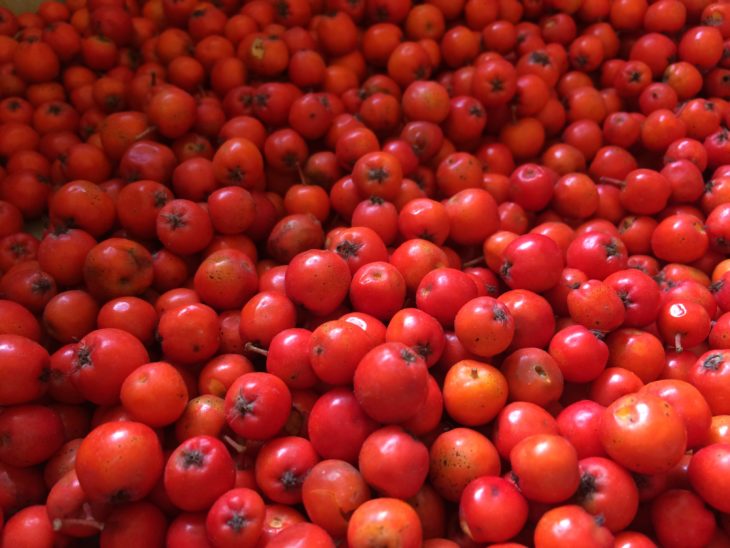Growing Rowan
The rowan tree and its bright red berries have long been associated with autumn arriving. Rowan, Sorbus aucuparia is also known as mountain ash. However, it is completely unrelated to the ash, it just has similar pinnate leaves. It got its name because of its ability to grow well at high altitudes.
Its Celtic name is ‘fid na ndruad’ which I am told translates as the wizard’s tree. This gives a little insight into the folklore surrounding the rowan tree. In Scotland, it seems to mainly be associated with luck and warding off evil spirits. It was used when building a house to protect its inhabitants and planted in and around graveyards to expel spirits. A rowan tree can live for 200 years so you may still find some rowan trees around graveyards today.
To identify a rowan tree look for their pinnate leaves. This is what it’s called when a single branch tip has two rows of leaves either side with one leaflet at the end. Each leaf has a serrated or bumpy edge. The bark is smooth and shiny on young trees and older ones are slightly more brown-grey. They have cream flowers that come out in late spring. Depending on how good the weather is that summer the tree will then produce beautiful clusters of bright red berries, which should be ripe by the end of August. Despite their bright warning like colouration, the rowan berry is completely harmless.
The red colour is actually to attract birds. The red against the green of the leaves is enhanced to a bird’s superior sense of sight. The flesh of the berry is produced rather like a bribe to entice the bird to eat the seeds. The seeds then pass through the bird’s digestive system and deposited away from their parent tree. This is known as endozoochory. It can alter a seed to help them germinate faster and they also get the bonus of being surrounded by a food supply to help them start to grow.

This week I collected a shopping bag full of berries from the reserve. The berries can be made into wine or jelly but instead, we are removing the tiny seeds hidden within the berry to plant them. I started by removing all the berries from their stems. Then I began to crush them by hand in order to remove the flesh of the berry. I then rinsed them and sieved them until I had released as many seeds as possible. Them I would do it all again just to check. Eventually, I managed to get a lot of seeds separated from the flesh.
Then we moved on to pre-treating them. We got a large pot and put enough stones to cover the bottom in, then we completely cover them in horticultural sand. The seeds are then mixed with a 50% compost and 50% horticultural sand. They are layered into the pot and again covered with sand. The pot is then popped in a shady outdoor spot all winter. By March we should have a few growing and be able to plant them out in our tree nursery!
Cait McCauley, Falls of Clyde Assistant Ranger Intern
Help support our vital work and join us today!
Help protect Scotland’s wildlife
Our work to save Scotland’s wildlife is made possible thanks to the generosity of our members and supporters.
Join today from just £3 a month to help protect the species you love.
Preface
The rowan tree and its bright red berries have long been associated with autumn arriving. Rowan, Sorbus aucuparia is also known as mountain ash. However, it is completely unrelated to …
